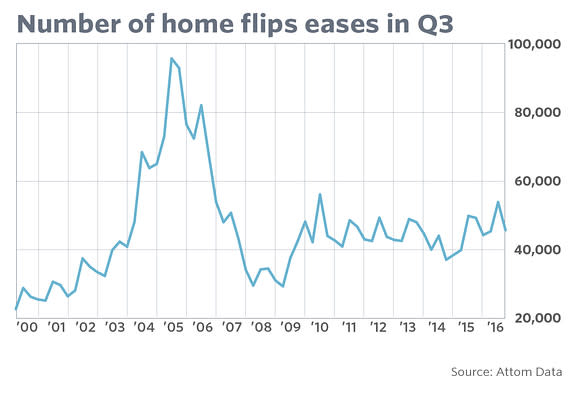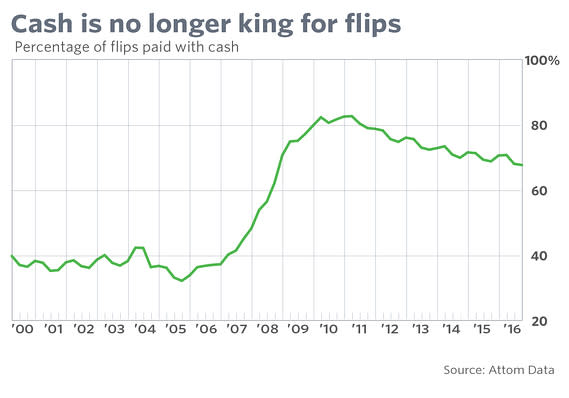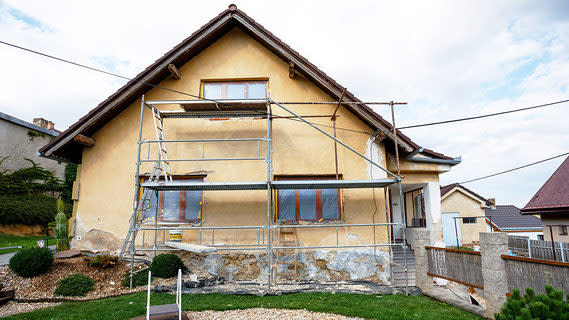House Flippers Flee ‘Flashy’ Cities as Prices Rise and Inventories Fall
Shutterstock
Home flipping dipped in the third quarter as the chronically low inventory and higher prices plaguing the housing market made it more challenging to buy real estate cheaply enough to turn a nice profit.
There were 45,718 single family homes and condos flipped during the quarter, according to Attom Data, down 7% compared with a year ago. In the second quarter, flipping — defined as a property that is sold in an arms-length sale for the second time within a 12-month period — had touched a nine-year high.

Flippers, like most real estate buyers, are finding that the supply of homes is tight and prices are high. But flippers focus on a particular metric that most traditional buyers overlook, according to Attom Vice President Daren Blomquist — the discount to estimated market value of each property.
“Flashy markets that are in the news,” like Phoenix, Las Vegas, and Miami, still haven’t recovered from the hits they took in the housing crash, Blomquist said in an interview. But the purchase price discount is only 15% in those cities, according to Attom data.
In what flippers consider secondary and even tertiary markets, the discount is much steeper. Flippers can get discounts of about 44% in markets like metro Rochester, N.Y., Baltimore, Md., and Cincinnati, Ohio.
The discount to fair-market-value gauge for buying a property is more important to most flippers than the question of how much they can sell for, perhaps because inventory is so constrained, Blomquist told MarketWatch. With construction of new homes running so much lower than in past periods, flippers are filling an important role of providing “like-new,” move-in-ready homes for buyers who can’t or don’t want to invest time and money in fixing up a property themselves.
Attom data show another shift in the flipping market. The percent of flips that were purchased with all cash slipped in the third quarter to 67.9%. That share has been declining steadily since a high of 82.9% in early 2011, though it’s still nearly double the lows touched during the bubble-era years when traditional mortgage financing at rock-bottom rates was available to anyone who wanted it.

Now, flippers aren’t tapping old-fashioned mortgage financing, but relying more and more on new types of lenders. This new breed of financiers, some of which crowdsource their funding, offer loans specifically for flippers. Examples include Patch of Land, RealtyShares, and Asset Avenue.
The new lending marketplace is one reason Blomquist thinks the third-quarter decline is temporary. But there’s another consideration familiar to anyone who lived through the last real estate cycle. “It’s because you have cycles, and in an up-cycle like right now people start believing that it’s going to continue forever so they’re willing to jump on the bandwagon,” he said.
The post House Flippers Flee ‘Flashy’ Cities as Prices Rise and Inventories Fall appeared first on Real Estate News and Advice - realtor.com.

 Yahoo Finance
Yahoo Finance 

